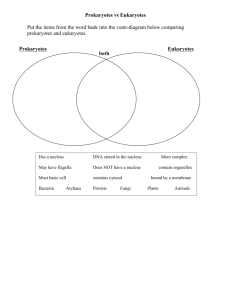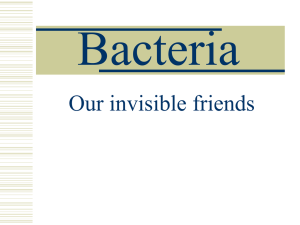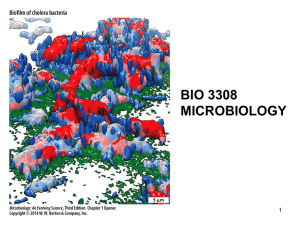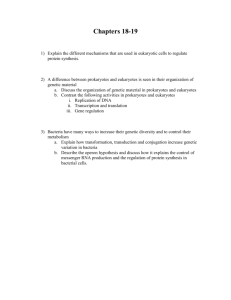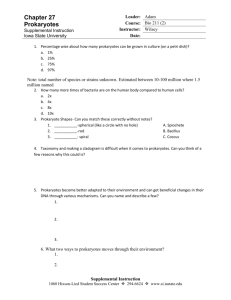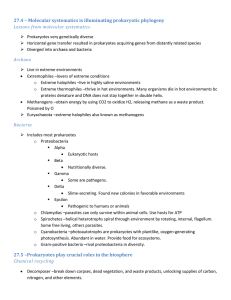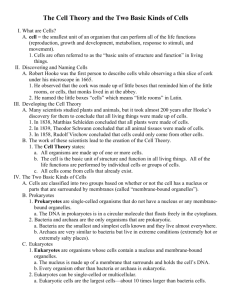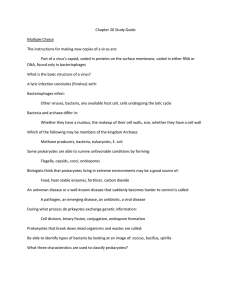Prokaryote
advertisement
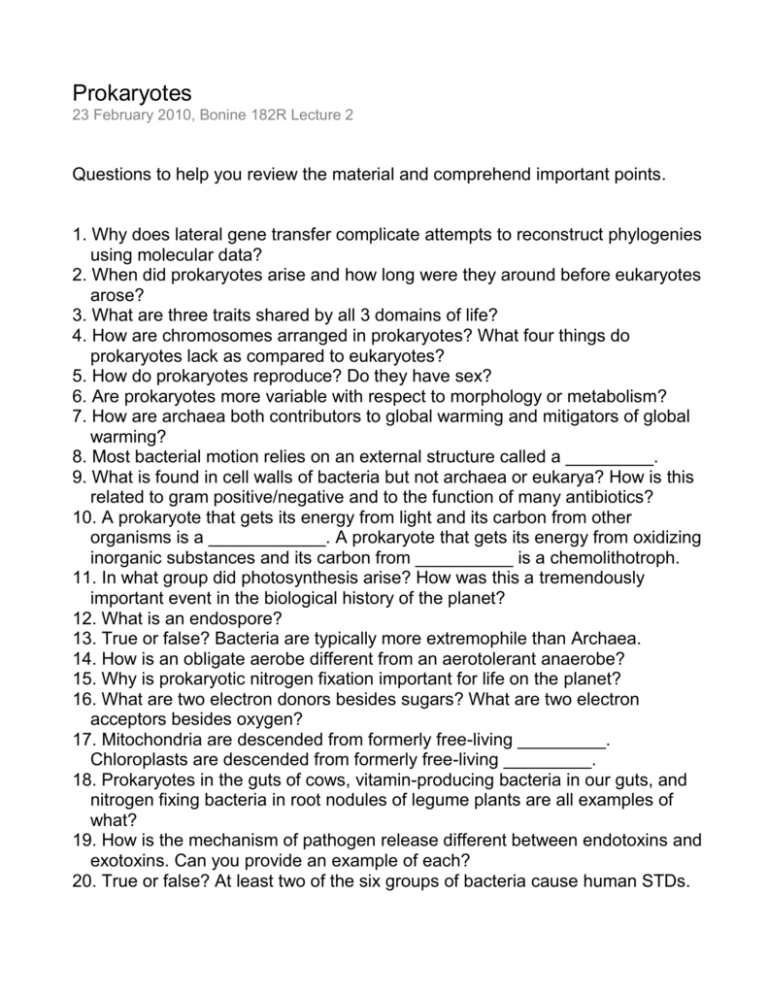
Prokaryotes 23 February 2010, Bonine 182R Lecture 2 Questions to help you review the material and comprehend important points. 1. Why does lateral gene transfer complicate attempts to reconstruct phylogenies using molecular data? 2. When did prokaryotes arise and how long were they around before eukaryotes arose? 3. What are three traits shared by all 3 domains of life? 4. How are chromosomes arranged in prokaryotes? What four things do prokaryotes lack as compared to eukaryotes? 5. How do prokaryotes reproduce? Do they have sex? 6. Are prokaryotes more variable with respect to morphology or metabolism? 7. How are archaea both contributors to global warming and mitigators of global warming? 8. Most bacterial motion relies on an external structure called a _________. 9. What is found in cell walls of bacteria but not archaea or eukarya? How is this related to gram positive/negative and to the function of many antibiotics? 10. A prokaryote that gets its energy from light and its carbon from other organisms is a ____________. A prokaryote that gets its energy from oxidizing inorganic substances and its carbon from __________ is a chemolithotroph. 11. In what group did photosynthesis arise? How was this a tremendously important event in the biological history of the planet? 12. What is an endospore? 13. True or false? Bacteria are typically more extremophile than Archaea. 14. How is an obligate aerobe different from an aerotolerant anaerobe? 15. Why is prokaryotic nitrogen fixation important for life on the planet? 16. What are two electron donors besides sugars? What are two electron acceptors besides oxygen? 17. Mitochondria are descended from formerly free-living _________. Chloroplasts are descended from formerly free-living _________. 18. Prokaryotes in the guts of cows, vitamin-producing bacteria in our guts, and nitrogen fixing bacteria in root nodules of legume plants are all examples of what? 19. How is the mechanism of pathogen release different between endotoxins and exotoxins. Can you provide an example of each? 20. True or false? At least two of the six groups of bacteria cause human STDs.
